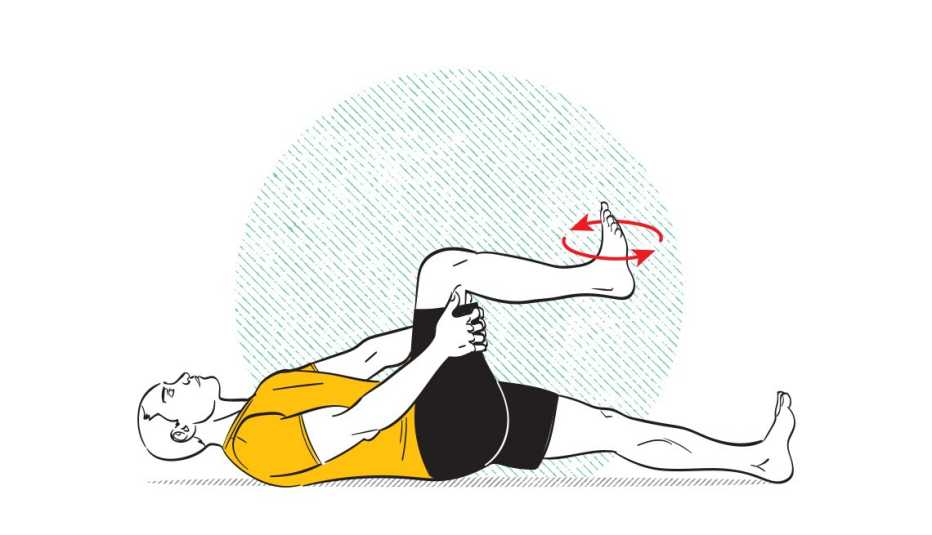Staying Fit


3 Easy Exercises
Years of sitting at a desk can throw your posture out of whack. That can change your gait and result in foot pain. Build a better base with these exercises from postural therapist Pete Egoscue.
Sit and Stand
Stand with a chair behind you, feet pointing straight ahead. Sit and stand 10 times.


Ankle Rolls
Lie on your back with one leg straight and the other supported by your hands. Make 20 ankle circles in each direction, then point and flex the toes 20 times. Lower and repeat with the other ankle.


Static Back
Lie on your back with one leg straight and the other supported by your hands. Make 20 ankle circles in each direction, then point and flex the toes 20 times. Lower and repeat with the other ankle.
One of the most momentous sports injuries of all time wasn't a gruesome knee tear or a blown-out shoulder. It was Joe DiMaggio's heel spur, a painful bony protrusion said to have ended the New York Yankee's career in 1951. But DiMaggio's foot troubles didn't end there. In 1990, nearly 40 years after he hung up his cleats, the athlete sought treatment again: He couldn't play golf or even walk.
"Foot and ankle problems are not life-threatening, but they're lifestyle-threatening,” explains podiatrist Rock Positano, director of the nonsurgical foot and ankle service at New York City's Hospital for Special Surgery. Foot pain often is the triggering event that leads to musculoskeletal problems like knee, hip and back pain and ultimately to falls, loss of mobility or worse.


AARP Membership— $12 for your first year when you sign up for Automatic Renewal
Get instant access to members-only products and hundreds of discounts, a free second membership, and a subscription to AARP the Magazine.
About 24 percent of people over 45 suffer from foot pain. By 70, that number's more like 50 percent. But foot pain is not a normal part of aging, says New Jersey-based podiatrist Alan Bass. “I never say to my patients, ‘You're getting older and these are just things that are happening.’ “
DiMaggio's injury and a failed surgery during his playing career were the big impetuses for nonsurgical musculoskeletal foot and ankle interventions in this country, says Positano, who successfully treated the retired player with a specialized brace.
Today, thanks in part to Joltin’ Joe, it's easier than ever to resolve foot pain, often with orthopedics rather than by going under the knife. Here are some common places it may strike, and how to strike back.
The Problems
1. Vascular
Blood flow to the feet diminishes with age, which can make any foot problem worse. For example, less blood flow to a tendon could contribute to issues like tendinitis, Positano says.
2. Orthopedics
Generally speaking, muscle or skeletal issues such as plantar fasciitis, heel spurs, bunions and arthritic changes in joints of the foot start to crop up after age 40, especially in active people. If you're a runner, you might notice tightness in your Achilles tendon all of a sudden.

































































More From AARP
3 Stretches for Healthy Feet and Ankles
Easy exercises to improve flexibility and circulationDoes Medicare cover my routine foot care and exams?
No, but diabetics can get medically necessary podiatry